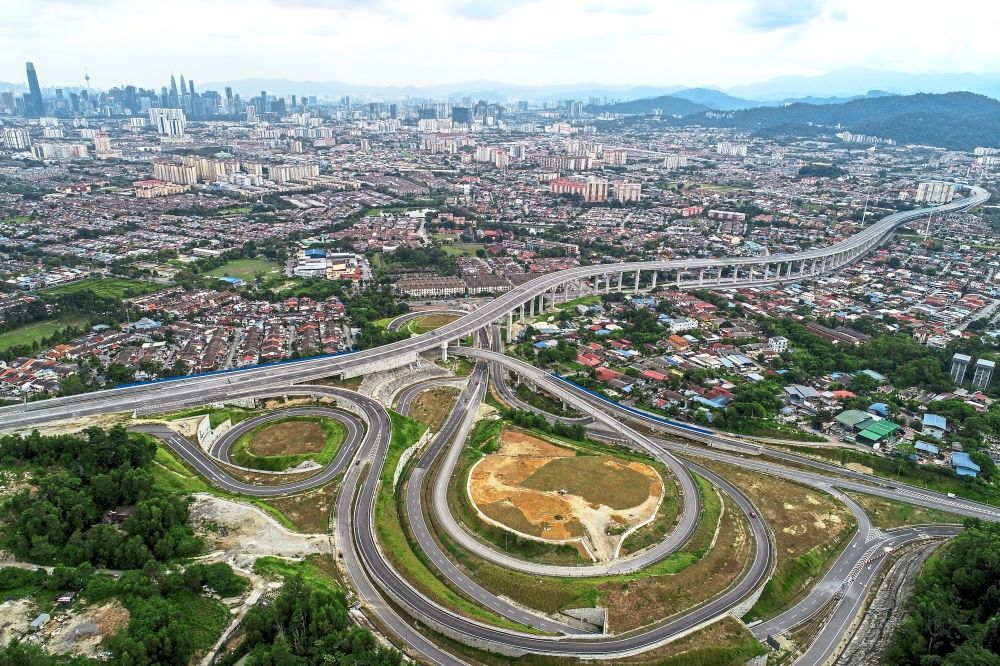Most industry players and subject matter experts applaud Anwar’s budget for its fairness, transparency and comprehensiveness
THE revised Budget 2023 tabled by Prime Minister (PM) Datuk Seri Anwar Ibrahim, who is also the finance minister, received a favourable response from the transport sector.
Most industry players and subject matter experts applauded Anwar’s budget for its fairness, transparency and comprehensiveness.
To hear further comments, The Malaysian Reserve (TMR) contacted several players and experts to get their views on the Malaysia Madani budget.
Road Transport
Universiti Putra Malaysia (UPM) head of the Road Safety Research Centre from the Faculty of Engineering Prof Dr Law Teik Hua was pleased with the allocation for the transport sector.
He said it is quite positive in the sense that it helps and contributes to solving many of the country’s transport problems, particularly the three to four items on public transport that the budget highlighted.
“I have always said that public transport is our future. Having a more efficient high-level service of public transport will solve many transport problems in the country, especially road safety problems,” he said to TMR last Friday.
He praised the government’s assistance for the Mass Rapid Transit 3 (MRT3) project in ensuring that it is completed on time.
He believed that the construction of MRT3 will attract more passengers, particularly young people, and this will reduce traffic congestion.
Law also noted that the continuation of the My50 monthly pass is highly encouraging and will become a high priority on improving the country’s public transit.
For East Malaysia, he also praised the government’s subsidies for air services, adding that aviation transport is critical for Sabah and Sarawak due to the geography there and the routes being insufficient.
Hence, in the short term, he admired the government’s effort to provide flight ticket subsidies for the people in East Malaysia.
Law also applauded the government’s allocation of RM20 billion to continue developing the Sabah and Sarawak Pan Borneo Highway and Sarawak-Sabah Link Road spanning over 1,000km.
“That road (highway) is very important. In the near future, Indonesia will move its capital to Kalimantan, hence we have to prepare ourselves to connect with the new capital.”
Commenting on the driving test allocation for e-hailing licences, Law said many people rely on e-hailing services to buy food, for delivery and for transport, and he did not see this trend decreasing anytime soon.
“It will even increase more in the future. Of course, obtaining a licence has always been difficult because the majority of gig economy labourers are from the bottom 40% income (B40) community,” he said.
Lastly, he applauded the government’s allocation on road safety to upgrade roads such as by providing better lighting and fixing potholes.
“Of course, the allocation is not that big, and it is certainly not enough to cover all the roads; but it is better than nothing,” he said.
On the other hand, road safety activist and former Malaysian Institute of Road Safety Research (Miros) board of directors member Shahrim Tamrin said the allocations for new road and road widening projects means the budget is still very much road-oriented and it does not spur the transport sector.
“It is a huge disappointment to see there is no budget allocation on road safety effort under the Transport Ministry (MoT) except for incentives to use public transport, which are also actually a reduction for MRT projects,” he told TMR.
Commenting on the driving test allocation for class B2 motorcycle, taxi, bus and e-hailing licences, he described it as a regressive move.
“I do not welcome it. I really hope this is not a start to lower the age of p-hailing riders to 18 years old because if that is the case, it would be bad news for road safety,” he said.
He believed that obtaining a driving or riding licence is something worth working for because it requires good driving habits and the implementation of safety precautions.
“It should not be given easy passage by the establishment,” Shahrim said, adding that the government should make the requirements more stringent.
“The nation needs to produce and nurture quality drivers and riders, and not just give out goodies for people to obtain licences,” he further said.
Bus and Railway
On the other hand, Malaysia’s public transport operator, Prasarana (M) Bhd welcomed and fully supported the revised Budget 2023.
It said the budget is in line with the emphasis placed by the government on rail and bus transport services which are important and provide great benefits to the people.
“It is also evident that the government is very concerned with the welfare and wellbeing of the people in line with the aspirations of Malaysia Madani — which is also in line with the direction of the agenda to dignify public transport,” said Prasarana in a statement.
Under the budget, the government made provision for the My50 monthly pass initiative for public transport users, which will benefit nearly 180,000 users.
The My50 initiative is an unlimited travel pass worth RM50 per month for unlimited use of rail and bus services operated by Prasarana.
Meanwhile, Gabungan e-Hailing Malaysia chairman Jose Rizal was pleased with the positive and inclusive budget and saw it as a booster for the Malaysian hailing community.
He said although it could not satisfy all parties, at least it could provide some relief to the Malaysian hailing community.
“In the future, we hope that there will be provisions so that every budget setting for the Malaysian e-hailing community can be allocated directly and transparently,” he said in his social media post last Friday.
Meanwhile, Pan Malaysian Bus Operators Association president Datuk Mohamad Ashfar Ali was left despondent with the budget as there was no aid and allocation for bus operators.
However, he applauded many initiatives for the public such as the Prasarana My50 unlimited travel pass and the extension of subsidised busses (SBST) programme to Melaka; Kuching, Sarawak; and Kota Kinabalu, Sabah; as well as the infrastructure development for MRT3.
“There is nothing for the operators per say, although we have asked the government to provide free training for those who want to become bus and lorry drivers due to our yearly shortage of 5,000 drivers.
“Nevertheless, we will still bring this matter up again — next month we will have a meeting with the transport minister,” he said to TMR.

Aviation
On air services, Universiti Kuala Lumpur (UniKL) Malaysian Institute of Aviation Technology economist Assoc Prof Dr Mohd Harridon Mohamed Suffian said the favourable taxation scheme for aviation and aerospace manufacturers encourages international organisations and companies to establish footholds in Malaysia, which subsequently will create a ripple of employment within the sectors.
He also noted that the high-value sectors inadvertently require workers and individuals with capable technological dexterities. Thus, institutions of higher education and technical and vocational education training (TVET) institutes will gain an upper hand with perhaps an increase enrolment in their programmes.
“The domino effect is apparent where these foreign or domestic manufacturers will also acquire raw materials for their operations and local suppliers will reap the benefits of being anointed as suppliers of the designated materials,” he told TMR.
Furthermore, he added that the extension of the allowances of the investment tax for the aerospace sector is a formidable approach to increase and expand the growth of aerospace companies in Malaysia.
Commenting on the expansion of the Subang Airport, he said it will establish a contextual mechanism for growth within numerous and myriad realms such as volume of passenger, upgrading of current physical infrastructure, introduction of high tech and updated equipment, and alleviation of trading hubs.
“The rejuvenation plan will entail facelifts of physical structures of the terminals, equipment, electronic and piping systems, and others, which will attract and allure passengers, businesses and traders, and inevitably the airport will add more functionalities to its core services and subsequently transform into an international trading hub,” he further explained.
He also believed that the plan will alter the landscape of the surrounding area with a projected increase of economic activities not only within the aerospace or aviation sector, but there will be spillover to other general sectors such as transport, manufacturing, human resource, logistics and education.
Meanwhile, he also applauds the government’s initiative to enhance the Penang Airport as a catalyst to liberate the economic stature of the northern region where the expansion will complement the electrical and electronics (E&E) industry in Penang with cargo movements that are projected to appreciate within a defined period.
“It is a winnable situation for the E&E industry and its counterparts as its end products could be transported and exported with increased efficiency and the revitalisation of the airport would see an increase of the volumes of trades,” he said.
Moreover, Mohd Harridon said the augmentation of Penang Airport will also monumentally serve the northern region with movements of goods and tangible entities concentrated upon Bayan Lepas — hence, transforming the area into an epicentre of business and trade.
“This impetus is also viable in contrast to developing and establishing a new airport in Kulim, Kedah, which would depreciate the coffers of the government.
“But it is also essential to mathematically measure and numerically calculate the economic sustenance to promulgate an effective fiscal policy in the future to sustain the economic vibrancy,” he concluded.
Reference: https://themalaysianreserve.com/2023/03/02/positive-response-from-transport-sector/

